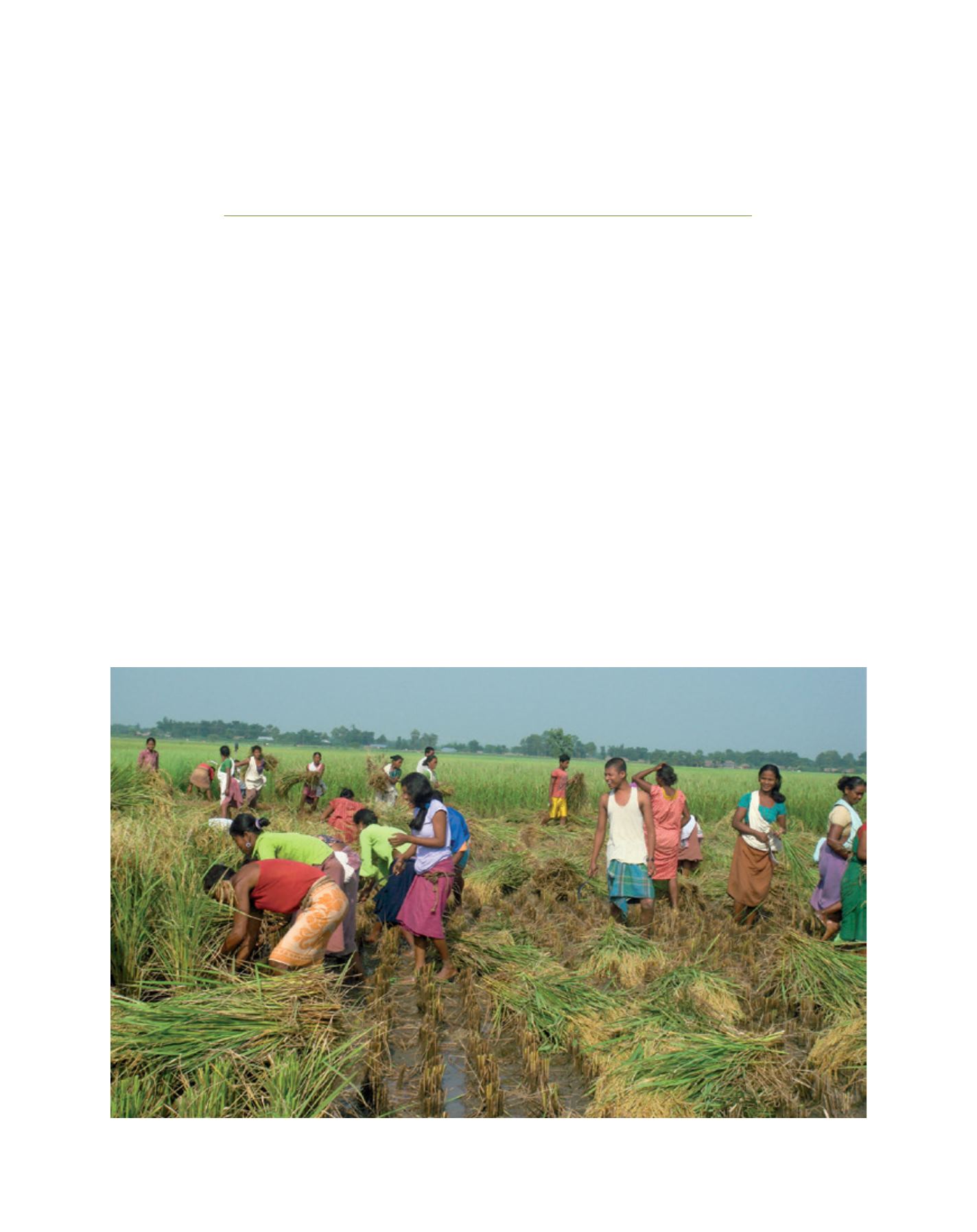

[
] 42
Unlocking the potential of
family farmers with agroecology
Edith van Walsum, Director; Janneke Bruil, Coordinator, Learning and Advocacy; and Nick Pasiecznik,
Coordinating Editor, ILEIA – Centre for Learning on Sustainable Agriculture, the Netherlands
I
n the 1980s, family farmers in Madagascar started
to experiment with new practices in their rice fields.
After many years of trial and error, of adapting and
applying lessons learned, this resulted in the highly
effective practice of rice intensification, signifying big
improvements in the food security of family farmers.
“For me this system means Merdeka (freedom),” said Pak
Enseng, a small-scale family farmer in Indonesia. “I get a fair
yield and am no longer dependent on buying seeds, chemical
fertilizer or pesticides.”
The techniques include transplanting young seedlings,
spacing single plants more widely, and keeping the soil
moist instead of flooded. This enables rice plants to create
stronger tillers and roots and become much more efficient
in the uptake of water and nutrients. The result is a crop
that is more resilient to droughts, pests and diseases. This
agroecological practice is now known as the system of rice
intensification (SRI). Based on an agroecological approach,
SRI crossed the ocean to Asia in 1999. SRI methods raise,
concurrently, the productivity of the land, the labour, the
water and the capital that are employed in irrigated rice
production. The principles are proving equally relevant for
other crops like wheat, maize, millets, sorghums, vegeta-
bles and tubers. Today SRI principles are being applied in
different ways by millions of farmers in over 50 countries on
different crops, contributing substantially to the food secu-
rity and food sovereignty of family farmers.
SRI is just one example of a broad range of agroecological
practices. This example makes it very clear that agroecological
practices can offer effective solutions for family farmers. It can
help to unlock the great potential of family farmers to contrib-
SRI enables stronger rice plants and a crop that is more resilient to droughts, pests and diseases
Image: Rajendra Uprety
D
eep
R
oots
















